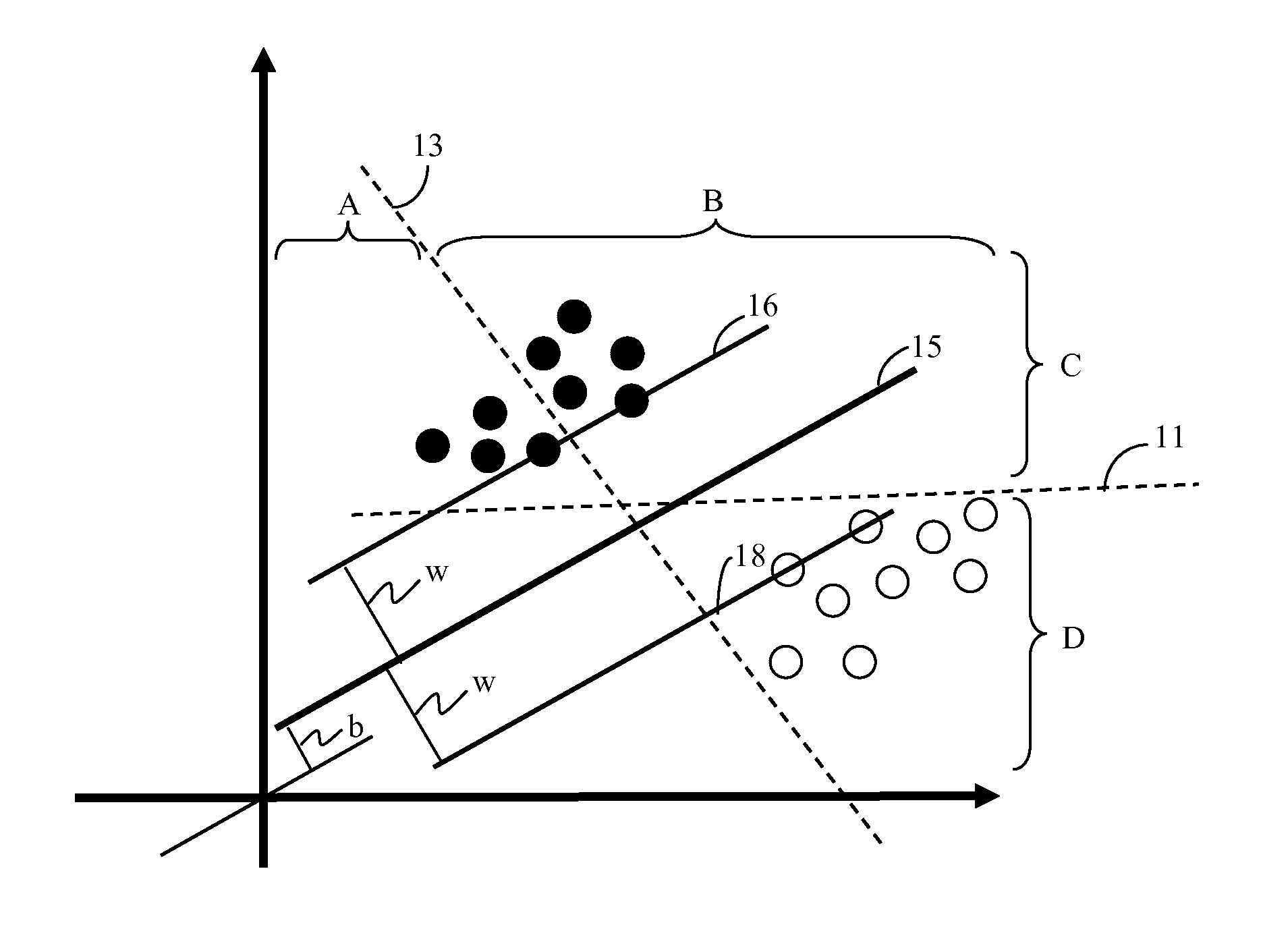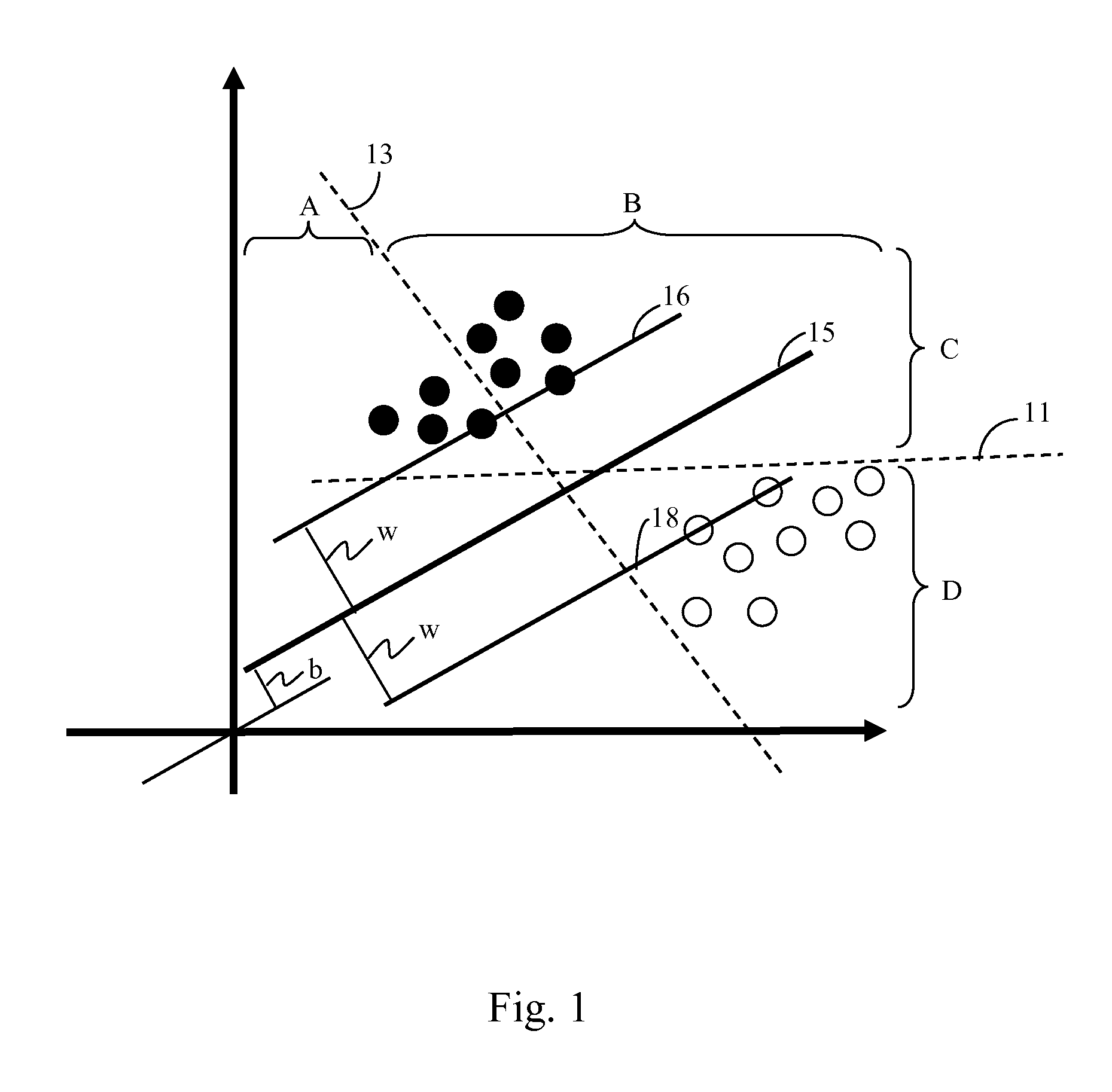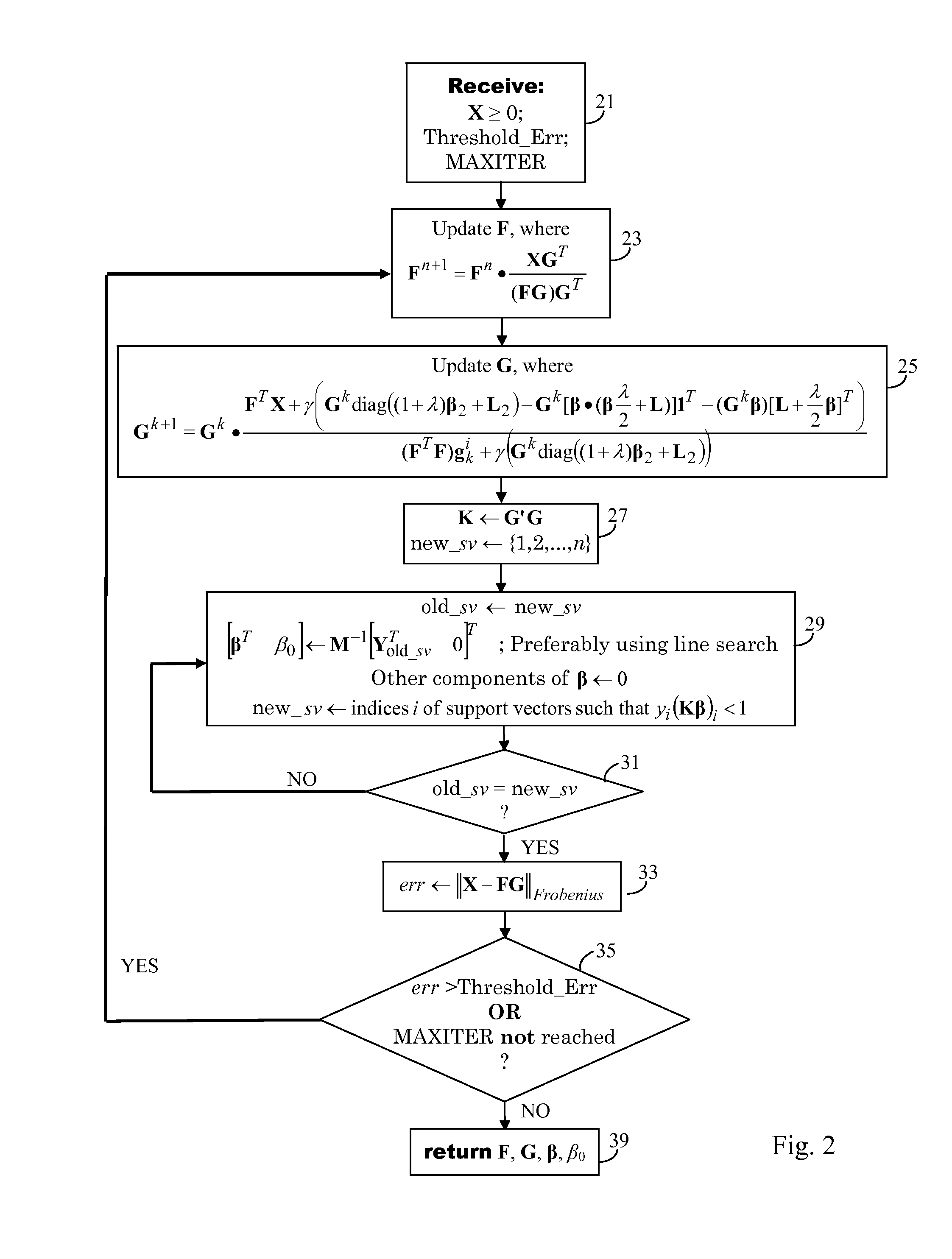Non-Negative Matrix Factorization as a Feature Selection Tool for Maximum Margin Classifiers
a feature selection and feature selection technology, applied in the field of identifying a maximum margin classifier, can solve the problems of not providing an optimal separation between the first and second data clusters, and not providing useful information regarding similarities
- Summary
- Abstract
- Description
- Claims
- Application Information
AI Technical Summary
Benefits of technology
Problems solved by technology
Method used
Image
Examples
Embodiment Construction
[0044]Various extensions and variations of non-negative matrix factorization (NMF) have been proposed, but NMF, in a general form, can be described by the following factorization:
Xd×N=Wd×rHr×N (1)
where d is the dimension of the data, N is the number of data points (usually more than d) and r<d. Generally, this factorization has been compared with data decomposition techniques. In this sense W is called the set of basis functions and the set H is the data specific weights. It has been claimed by some researchers that such a decomposition has some favorable properties over other similar decompositions, such as PCA etc.
[0045]Most of the work in this field, to date, has dealt with NMF decomposition as a unary operation. Penalties such as sparseness constraint, have been proposed, but the motivation still remains largely experimental. A non-smooth NMF that distributes the sparseness constraint to both the basis as well as feature matrices has also been proposed. More recently, a graph l...
PUM
 Login to View More
Login to View More Abstract
Description
Claims
Application Information
 Login to View More
Login to View More - R&D
- Intellectual Property
- Life Sciences
- Materials
- Tech Scout
- Unparalleled Data Quality
- Higher Quality Content
- 60% Fewer Hallucinations
Browse by: Latest US Patents, China's latest patents, Technical Efficacy Thesaurus, Application Domain, Technology Topic, Popular Technical Reports.
© 2025 PatSnap. All rights reserved.Legal|Privacy policy|Modern Slavery Act Transparency Statement|Sitemap|About US| Contact US: help@patsnap.com



